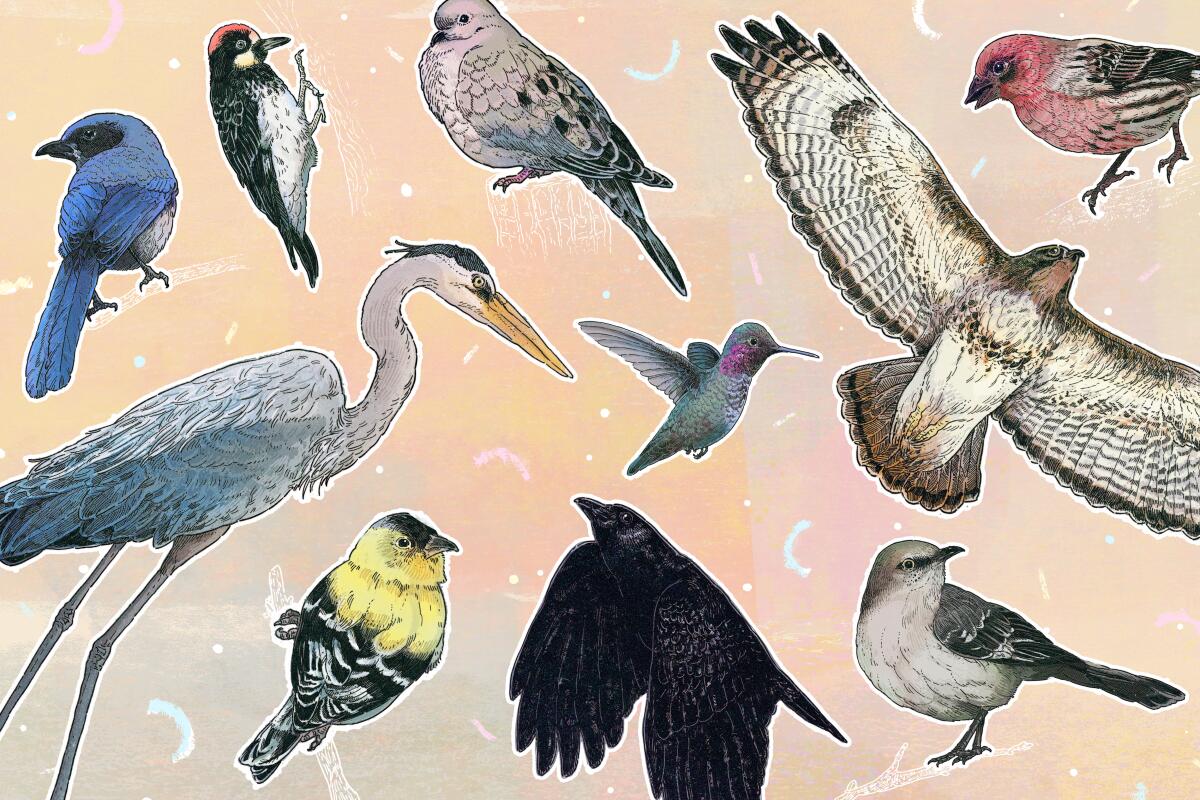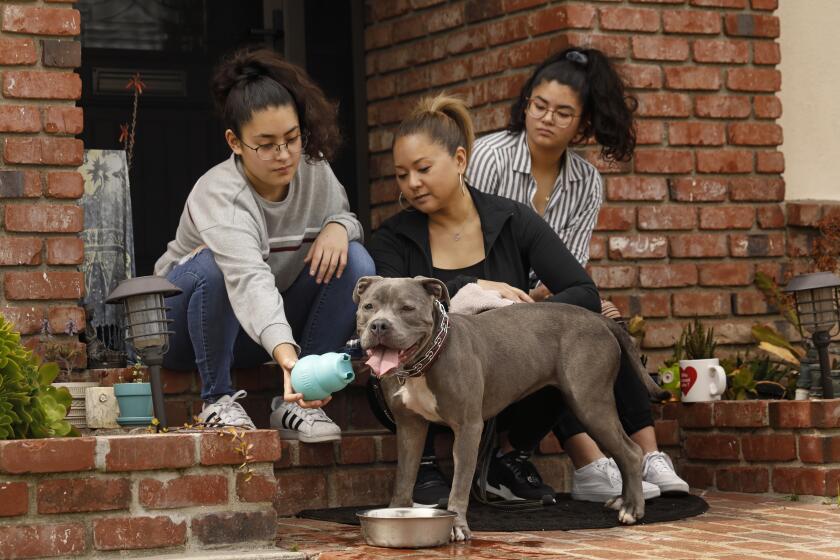Op-Ed: Why we hunger for a connection to the wild during quarantine

- Share via
While growing up, Alan Rabinowitz stuttered so badly that he could barely communicate with other people. For a while he gave up trying. But when he was 5 years old, his father took him to the Bronx Zoo, where he was drawn to a solitary jaguar. After a while, the jaguar moved toward him and sat down. And Alan began to whisper to it.
On return visits, he would sit next to the cage and talk to the jaguar for hours. “The jaguar had no expectations of me,” he later wrote, “they had feelings they couldn’t express either.” As the boy’s stress melted away and his stuttering improved, he made a vow. If he ever found his full voice, he would become a voice for animals.
To research a book about the evolving relationship between humans and other animals, I spent four years collecting such stories from people of all ages and backgrounds. They often spoke about the unexpected grace of kinship with untamed animals, about wonder and yearning. A young girl believed she was protected from bullies by a swan. A hiker who, surrounded by a herd of elk, felt the intelligence of their world. A scuba-diving marine biologist was caught in the clutches of a giant octopus, only to be released after they made eye contact.
Even before the loneliness of quarantine, health professionals worried about what some called an epidemic of human isolation. They reported that loneliness is a high-risk factor for early death. A 2018 study found that each generation, from oldest to youngest — the Greatest Generation to Generation Z — experienced more social isolation than the one that came before it.
Now we’re stressed by fear of the coronavirus, related joblessness, political unrest, and cut off from our usual social circles (save for Zoom). Around the country, people, like my wife and I, have rushed to foster and adopt pets. Since the pandemic, many of us hunger for a stronger connection to the animals right outside our windows.
Amid the coronavirus lockdown, interest in adopting and fostering pets is soaring. Many facilities have waiting lists, even for kittens.
This month Jodi Levine of Trabuco Canyon told me about her daughter’s attachment to a screech owl that lived in a tree outside a bedroom window. It disappeared long before the coming of the coronavirus. Recently, when her family was feeling particularly anxious, she said her daughter “brightened, shouting, ‘The owl’s back!’” Levine’s young son now rises early to watch the owl “and the owl watches him,” she said. These connections bring her “an awareness of something greater.”
Another friend, Michele Williams of New Port Richey, Fla., placed a bird feeder outside her elderly mother’s bedroom window so she could be soothed by sparrows, chickadees and doves. Williams said she is grateful for “all the fluff and feathers God provides, to be healing for our wounded spirit” — and won’t again take the presence of animals for granted.
From my home office east of San Diego, I can watch deer on the trail at the end of our acre, including one who appeared to stop to watch the morning sun emerge from the trees. I see wild turkeys pecking their way north. And our trail camera catches night visitors in the act of living: the purposeful coyote and the pregnant possum, and a ghostly mountain lion turning into the brush.
Some of us are lucky to live in places where connecting to wildlife is easier. But too many people have too little access to parks or yards or even a tree outside a window. José González, founder of the Latino Outdoors organization, recently wrote in High Country News that he’s concerned limiting access to outdoor spaces during the pandemic and at other times “will take a disproportionate toll on the communities that need it the most.”
We are separated from each other by unwalkable cities, the breakdown of the extended family and the dominance of screen time. But I believe our loneliness is also rooted in something older, deeper: our alienation from the natural world, our desperateness to feel that we are not alone in the universe — our “species loneliness,” a term introduced in 1993 by Michael Vincent McGinnis, an editor of books about ecology.
“Species loneliness in a wounded landscape moves us to want to restore our relationship with place and others,” he later wrote, “or to put it another way, modern humanity yearns to reestablish and restore an ecology of shared identity.”
As policymakers draw blueprints for a pandemic-altered future, they should envision communities with more equitable distribution of parks, wildlife corridors lacing through our cities, more natural schoolyards with room for social distancing — and more chances for everyone to connect with, be healed by and protect other species. A nurturing connection to the natural world should be considered a human right, particularly for children.
Alan Rabinowitz kept the promise he made as a boy. He went on to co-found Panthera, a conservation organization that helps protect wildcat species, including jaguars, around the world. He gave back to the animal world that helped him heal. The rest of us can do the same.
We can begin by seeing other species for who they really are, members of our larger family, who share their lives with us in the habitat of the heart.
Richard Louv’s latest book is “Our Wild Calling: How Connecting With Animals Can Transform Our Lives — and Save Theirs.” He is the co-founder of the Children & Nature Network.
More to Read
A cure for the common opinion
Get thought-provoking perspectives with our weekly newsletter.
You may occasionally receive promotional content from the Los Angeles Times.











